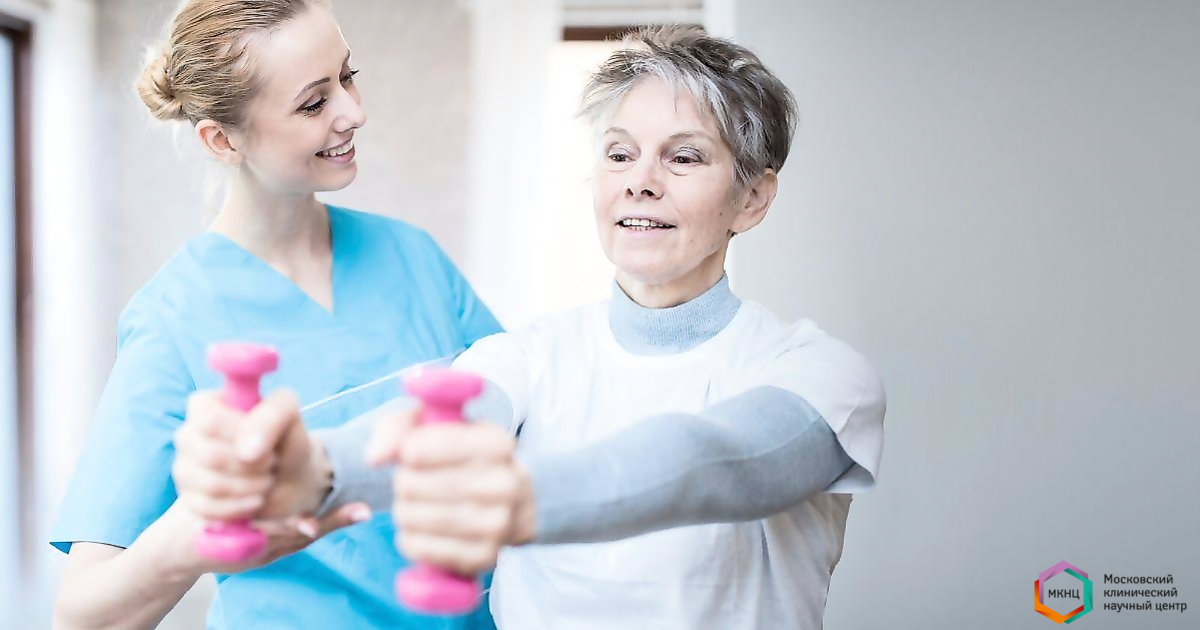Active lifestyle on the background of breast cancer treatment
NewsBreast cancer is a malignant neoplasm in the thoracic lobes and ducts. According to the World Health Organization, breast cancer is one of the most common cancers in the world. Every year in Russia, about 54 thousand cases of breast cancer are registered. Today, three methods of treating breast cancer are used in oncology: surgical, medicinal (chemotherapy, endocrinotherapy, treatment with targeted drugs) and radiation therapy.

Illness is not a reason to lead a sedentary lifestyle. It is during the treatment period that patients must perform physical exercises. An active lifestyle has a positive effect on both the physical and psychological state of the patient.
Modern studies emphasize the effectiveness of physical activity in patients with breast cancer. They increase the life expectancy during therapy. Thus, survival rates in patients who devoted 3 hours of physical activity per week were 30% higher than in those who led a sedentary lifestyle. Results from another 16 studies indicated an 11% reduction in breast cancer mortality and a 24% reduction in overall mortality risk among those patients who received the recommended 150 minutes of exercise each week.
We're not talking about grueling training sessions and setting records. The operation has passed, and now moderate physical activity, a proper drinking regime and a healthy diet against the background of drug and radiation therapy will lead to the following positive changes:
- maintaining muscle mass;
- support for a healthy weight;
- reduction of nausea, weakness, pain, fatigue, anxiety;
- increasing the level of self-esteem;
- improving memory and concentration;
- improvement of the cardiovascular system;
- reducing the risk of developing osteoporosis, hypertension and diabetes mellitus;
- an obstacle to the restriction of joint mobility and muscle weakness.
How to choose the optimal training program? What types of activity are not contraindicated? Your doctor will give you the answers to all your questions. The choice of physical exercises is influenced by the degree of prevalence of the disease, the quality of recovery, the type of surgery, options for additional treatment, and the initial physical condition. Be sure to discuss with your doctor the optimal type of activity and exercise regime for you.
Please note that the special conditions in which you should refrain from physical activity, oncologists include:
- anemia;
- severe radiation damage to the skin;
- high risk of pathological fracture;
- significant weight loss;
- cardiac arrhythmia.
We have prepared general recommendations for the selection of physical activity. The optimal exercise program includes:
- Moderate strength training (using weights). They tone the muscles, strengthen the bone structure.
- Cardio training (walking, running, cycling, swimming, dancing, etc.). Improves the functioning of the cardiovascular and respiratory systems.
- Stretching. Promotes flexibility and coordination.
Physical activity after surgical treatment
After 2-3 days after surgery, most patients are able to take short walks. You should start slowly and gradually. For starters, three to five minutes of walking a day is enough. Aim to walk or run very short distances for a few minutes a day. If there are no contraindications, you can afford to run short distances every day, with a gradual increase in the running time to 30 minutes four or five times a week.
After the postoperative wound has healed, you can start stretching exercises. The simplest stretching exercises include simulating toweling, combing, buttoning the bra hooks, squeezing and unclenching the hand (possibly with an object), and gently rotating the hand.
Physical activity during chemotherapy
IV courses. The side effects of the treatment and the feeling of eternal fatigue. There is only one desire - to lie down and not move. But, you can not do this in any case. Try to walk more, gradually increasing the distance traveled. Do regular chores around the house.
Chemotherapy affects the bone marrow cells, leading to a decrease in the protective properties of the immune system. During the course and during the recovery of blood parameters, you should refrain from visiting the pool. Yoga, Pilates and stretching are not contraindicated.
Physical activity on the background of endocrine therapy
Taking hormonal medications increases the risk of developing osteoporosis. Regular strength exercises will increase the strength of the bones. But, for patients with bone metastasis, this type of training is not suitable. Due to a violation of the integrity of the bone and a decrease in its strength, a pathological fracture may occur.
Walking or swimming can help relieve joint pain, joint stiffness, and hot flashes that occur during endocrine therapy.
Physical activity during radiation therapy
In the absence of complications during radiation therapy, walking, light stretching, yoga and Pilates are allowed. Do not use the pool during or immediately after radiation therapy. The chlorine contained in the water can irritate the skin, increasing the likelihood of infectious complications, and the swimsuit can cause discomfort.
We have given examples of physical activity against the background of the main types of breast cancer treatment. As your overall health and well-being improves, you can increase your workload. Diversify the set of exercises by adding new ones. Gradually continue to increase the pace and duration of training. And most importantly, be sure to be active both in the first days after surgery and after discharge from the hospital.





